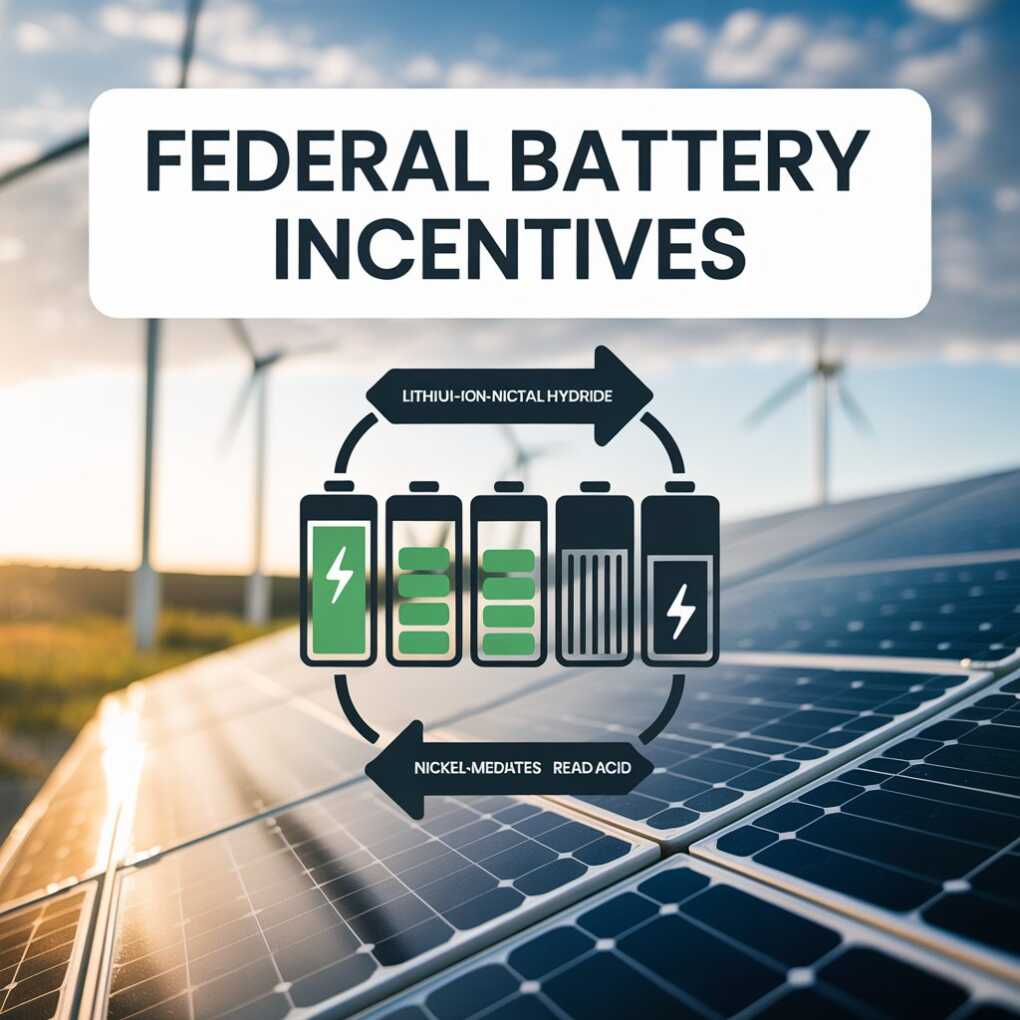The transition to sustainable energy is an imperative step towards reducing our carbon footprint and mitigating the impacts of climate change. One of the most promising avenues in this domain is the development and adoption of energy storage solutions, particularly batteries. To promote the uptake of such technologies, various government-led initiatives have been put in place. Among these, the federal battery incentive is a pivotal mechanism driving the shift towards cleaner energy sources.

Understanding Federal Battery Incentives
Federal battery incentives are policies formulated by governments to encourage individuals and businesses to invest in battery storage systems. These incentives typically come in the form of grants, tax credits, or rebates that help to offset the initial cost of battery systems. By making the technology more affordable, they play a crucial role in stimulating market growth and technological advancement.
The rationale behind these incentives is clear; energy storage systems are instrumental in enhancing the efficiency and reliability of the renewable energy sector. Batteries allow excess energy generated from sources like solar panels or wind turbines to be stored and used at times when production is low, thus stabilising the grid and ensuring a consistent supply of power.
Economic Advantages of Battery Incentives
From an economic perspective, federal battery incentives serve as a catalyst for industry growth. They lower the barrier to entry for consumers and businesses, accelerating the adoption of energy storage systems. This increased demand leads to larger-scale production, job creation, and technological innovation, contributing to economic vitality.
Moreover, these incentives can lead to reduced energy costs for consumers over time. As more people shift to using batteries along with renewable energy sources, it can decrease reliance on conventional grid electricity, providing significant savings on energy bills.
Environmental Impact of Adopting Battery Systems
Environmentally, the adoption of battery storage incentivised by federal efforts translates to profound benefits. By facilitating the integration of renewable energy sources into the grid, batteries diminish the need for fossil fuels, thereby reducing greenhouse gas emissions and air pollution.
Furthermore, the increased penetration of renewable energy as a result of these incentives helps to conserve natural resources and protects ecosystems from the detrimental effects of traditional energy production methods.
Strengthening Energy Security through Incentives
Energy independence and security are additional benefits that come with strategically implemented battery incentives. As nations rely less on imported fossil fuels and more on their own renewable energy capabilities, they become less vulnerable to external supply disruptions and volatile global markets.
Energy storage systems also enhance grid resilience against natural disasters or man-made disruptions by providing backup power and maintaining essential services in times of crisis.
The Social Benefits of Energy Storage
On a social level, federal battery incentives can have a positive impact by increasing access to clean, affordable energy for low-income communities. These initiatives can be structured to ensure that all segments of the population reap the advantages of new technologies, promoting energy equity and social inclusion.
The health benefits are also noteworthy. By cutting down on pollution from fossil fuels, battery storage systems contribute to cleaner air and a reduction in health-related issues caused by air contaminants.
Challenges in Implementing Federal Battery Incentives
Despite the myriad of benefits, there are challenges associated with the implementation of federal battery incentives. The initial costs, even after incentives, may still be prohibitive for some. Additionally, the dissemination of information regarding these incentives can be uneven, leading to unequal access.
Technological advancement also means that the battery systems continuously evolve. Therefore, maintaining an incentive program that reflects the current technology landscape can be challenging for policymakers.
Global Comparisons and Lessons Learned
A global perspective reveals that different countries have taken varied approaches to battery incentives, with some offering more aggressive and comprehensive programs compared to others. Examining the outcomes of these programs offers valuable insights into best practices and effective policy design.
Successful incentives often involve a mix of direct financial support, regulatory measures, and clear long-term policy signals to guide industry and consumer expectations. Further, involvement of local industry stakeholders and continual monitoring and adaptation are key to the sustainability of these programs.
The Road Ahead for Battery Incentives
Looking to the future, the potential of battery storage as a cornerstone of sustainable energy systems is considerable. Continued and innovative federal battery incentives will remain vital in achieving the goals of carbon neutrality and a sustainable energy future.
Policy must evolve in step with technology, ensuring that incentives remain relevant and effectively drive the desired outcomes of increased adoption, reduced costs, and technological advancements in energy storage.
In conclusion, the federal battery incentive is more than just a financial tool—it’s an investment in the planet’s future. These incentives support the transition to a resilient, efficient, and clean energy landscape, yielding economic, environmental, and social benefits for current and future generations.
Moving forward, it is the collective responsibility of governments, businesses, and consumers to support and participate in this energy transformation, ensuring that the full spectrum of benefits from battery incentives is realised. The path toward sustainable power is paved with strategic policy decisions and the proactive engagement of all stakeholders.
